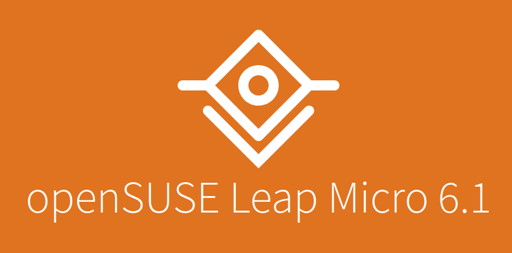- 18 Posts
- 126 Comments
I eventually decided on openSUSE Tumbleweed for a few reasons: rolling release, because I like to stay up-to-date; non-derivative, not a fork or dependent on other underlying distros; European, for (perceived) privacy reasons; a relatively well known and large distro with a decent community, for troubleshooting reasons; backed by a company, though that has both its ups and downs; lastly, support for KDE Plasma.
I actually had trouble finding a distro that suited all my criteria at the time, but openSUSE is good enough for now and I am pretty much satisfied.

 2·1 month ago
2·1 month agoThanks, now I’m depressed.

 9·1 month ago
9·1 month agoHonestly, guys, gals and others, Microsoft is making it crystal clear they don’t want you to use their OS. It’s not your OS, it’s theirs. Stop trying mangle it into something it is not. If you need registry edits just to make the OS usable, it’s not worth it. It’s not for you. Please, please, please look at alternatives that respect you, your intelligence, your privacy and your data. One day Microsoft will push an update that will lock you out of your machine unless you create an account. Jumping through these hoops is just delaying the inevitable. Using an OS is not worth all this effort and stress.
I landed on Claws Mail myself. It does look a bit dated, but the UI is functional and the client works. I’m content with it.

 11·2 months ago
11·2 months agoUnironically, this is why RMS was radicalized.
Librewolf, which is great, but I have been desperate for alternatives for a long time now. I also use Falkon and Gnome Web on the side and those are ok, but unfortunately not on the level of Firefox and its ilk. I’ve been considering Waterfox and GNU IceCat also, but honestly the overall situation is depressing. Currently, Librewolf ticks most of my boxes, but every browser has some issue or another that I’m not keen on. I have no idea what the next step is.

 9·3 months ago
9·3 months agoDistros packaging software means that it is available to install with the package manager from their repositories. No distro provides every piece of software out there. This can be mitigated with Flatpak, Snap, GUIX, AppImage or, in a pinch, by compiling the required program yourself.
Sounds like you’ve already done most of the work. From what you’ve said, Fedora with Plasma sounds great for your use case. Good luck on your journey and glad to have you aboard!

 3·3 months ago
3·3 months agoWith low specs like that, the experience will never be great, but with a very light desktop you can make it work. Debian is fine, but with some set up, Alpine could be one option. It’s a really light distro.
Turns out this is also available in Alpine repositories, so I went ahead and installed it on my phone. Could come in handy when browsing from public Wi-Fi or such. Thanks for the tip.
I turn it off every night or if I’m away for many hours, so about 10 minutes right now.
I do have a Raspberry Pi that’s been up 12 weeks, 5 days, 19 hours, 59 minutes. I believe there was a planned power outage when it was lasted turned off.

 6·4 months ago
6·4 months agoYup, Konsole is good enough.
KDE Plasma. It makes sense to me and everything functions more or less how I prefer it to. If I need something, it’s usually easy enough to find. Plasma being flexible is a plus, but I rarely need to do any modifications.
I loathe GNOME. Any time I use it it’s like pulling teeth. On a touch surface I can maybe get it, but on desktop I honestly think it has some serious usability problems cooked in. And since GNOME extensions can break at any time, trying to “fix” GNOME is a losing battle. If I had to use GNOME, I’d install GNOME Classic which is ok. Or better yet, use XFCE or MATE. GNOME is highly opinionated and that’s fair enough, they can do their thing and people seem to like what they offer, but boy is it not for me.
After quite a bit of agonizing, I eventually landed on openSUSE Tumbleweed. I chose a rolling release distro because on my desktop I want to be up-to-date. Having used Gentoo a long time ago, I didn’t want a distro that takes effort to install and set up. openSUSE is somewhat popular with an active community and decent documentation in case I run in to issues. I also considered the fact it’s based in Germany, because EU has at least some decent privacy laws. I was put off by the fact its backed by SUSE, but that’s a two-edged sword.
Right now I’m content with Tumbleweed, but I’m keeping an eye on OpenMandriva Lx if I feel like switching.

 7·6 months ago
7·6 months agoopenSUSE Tumbleweed has served me well for some time now. Maybe give it a look-see?
The interface is a bit bare bones and 90’s but I like it that way. It’s a good and reliable client.
Can’t help you there, I buy CDs and lossless copies from Bandcamp and Qobuz. Those work for me.
“Install Gentoo” is a meme, not life advice. With Gentoo, the installation process gives you good insight in to the internals of Linux systems and compiling (almost) everything from source is interesting, but won’t produce noticeable benefits for average users. Especially since updates take some time, what with compiling the programs again. Gentoo is a great distro with a fantastic package manager, but unless you’re an enthusiast or a serious hobbyist, Don’t Install Gentoo.

 451·9 months ago
451·9 months agoIt will be exciting to see Kamala and Trump debate whether Gecko or Blink should be the industry leader.













Mandriva is gone, but there’s a couple of projects carrying its legacy. OpenMandriva is one of them, obviously. Mandrake was my first distro too, so I have a soft spot for it.
From my perspective, OpenMandriva’s biggest strengths are that it’s independent, non-derivative, community driven, and based in Europe. Unfortunately it’s also small, but the people behind it seemingly do a lot with very little, so the community is passionate about the project.
Personally I’m just happy that there are smaller, non-corporate distros still out there providing alternatives. And OMLx seems like a pretty solid distro at that.
For their selling pitch, you can check their FAQ.